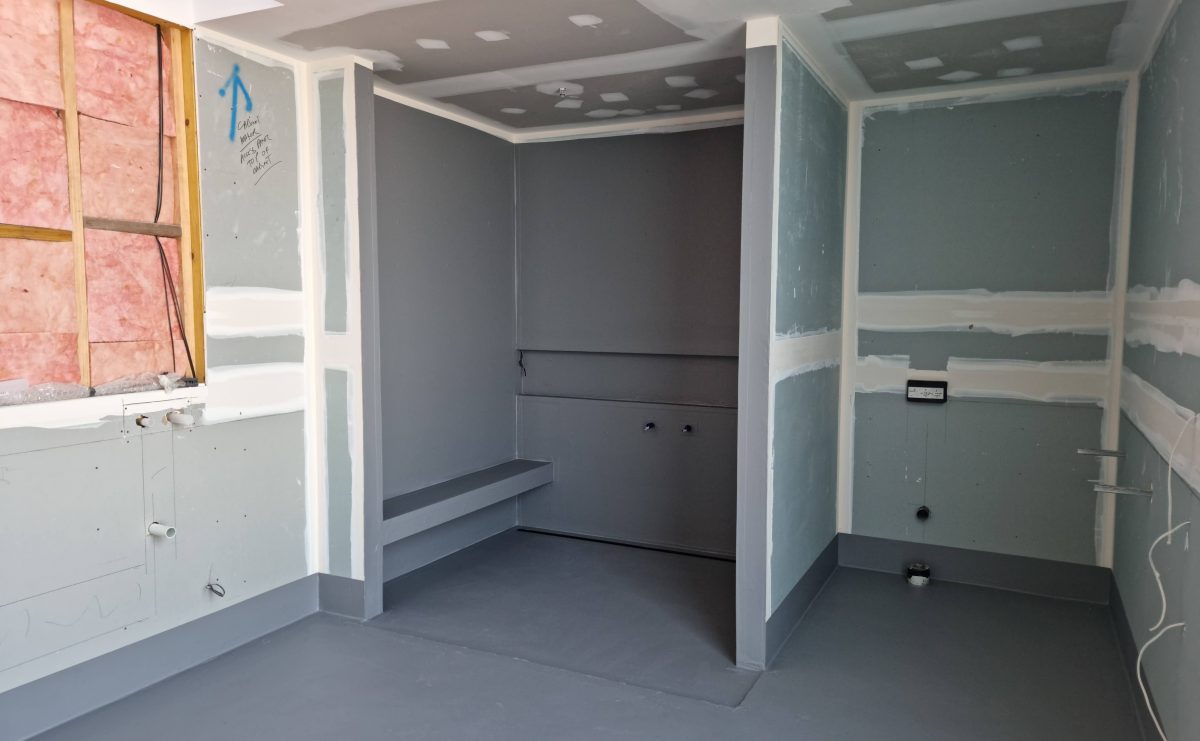Bathroom waterproofing is one of the most important aspects of waterproofing in any home. A typical shower receives flood quantity water being delivered to it on an almost daily basis. Any failure of bathroom waterproofing, especially in a shower recess, can cause catastrophic damage. Repairs can be very expensive as often the entire bathroom will need to be rebuilt to fix the smallest problem.

Like any form of waterproofing, a suitable substrate forms the basis for long term success. If tiles are to be applied directly to the membrane then the surface should be prepared as if tiling was to occur without the waterproofing being done.
The Waterproofers also request that no silicone or polyurethane is used in a bathroom prior to us coming to apply the waterproof coating. We often find leak control flanges (floor wastes) have been fitted and edge sealed with silicone. This silicone can interfere with some systems and prevent us from performing our works. We understand that tradesmen want to try and achieve a watertight seal prior to leaving site, but these actions can sometimes render it impossible for us to provide a warrantable solution.
Butyl Rubber Waterproofing
Butyl rubber is an ideal membrane for bathroom waterproofing given it can be applied either under a screed or directly below most surface finishes. Butyl rubber waterproofing can be applied to most substrates providing they conform to a minimum specification including concrete, plywood, and cement sheet. In some cases an epoxy primer is required prior to the laying of the butyl rubber waterproofing membrane.
When using butyl rubber waterproofing under a screed you will still have to apply another waterproofing membrane to the screed once dried to avoid any moisture soaking the screed and/or efflorescence rising from the screed through the finished surface. This membrane can be another layer of butyl rubber or one of the many seamless liquid membranes available.
Another thing you should bear in mind when looking at using a butyl rubber is that it needs to be applied to the building framework (or masonry) prior to the installation of any wall finishes. This allows the membrane folds to be hidden into the frame and avoid kick outs in corner tiles. This also means shower waterproofing is a two stage process, as once the wall sheeting is installed we will need to return and use a liquid waterproofing system on the walls.
The final major consideration for butyl rubber bathroom waterproofing is application of tiles. Butyl rubbers by their very nature are not easy materials to bond to and as a result most tile adhesives have serious problems creating an acceptable bond. It is best to discuss your tiling requirements with us when discussing your project.
Seamless Liquid Waterproofing
Bathroom waterproofing using a liquid system is slightly less forgiving that using a butyl rubber system but can be performed later in the construction phase minimising the opportunity for damage. The substrate should be prepared and ready to accept the finishing product, and in some cases epoxy primers may have to be applied in place of the standard primers.
Unlike butyl rubber, bathroom waterproofing using a liquid should have wall cladding in place. The bathroom should be to a state where tiling could occur immediately.
Liquid waterproofing systems can also accept a wider range of adhesives when it comes to final finishes. Again, these should be discussed prior to work commencement to ensure compatible products are used.